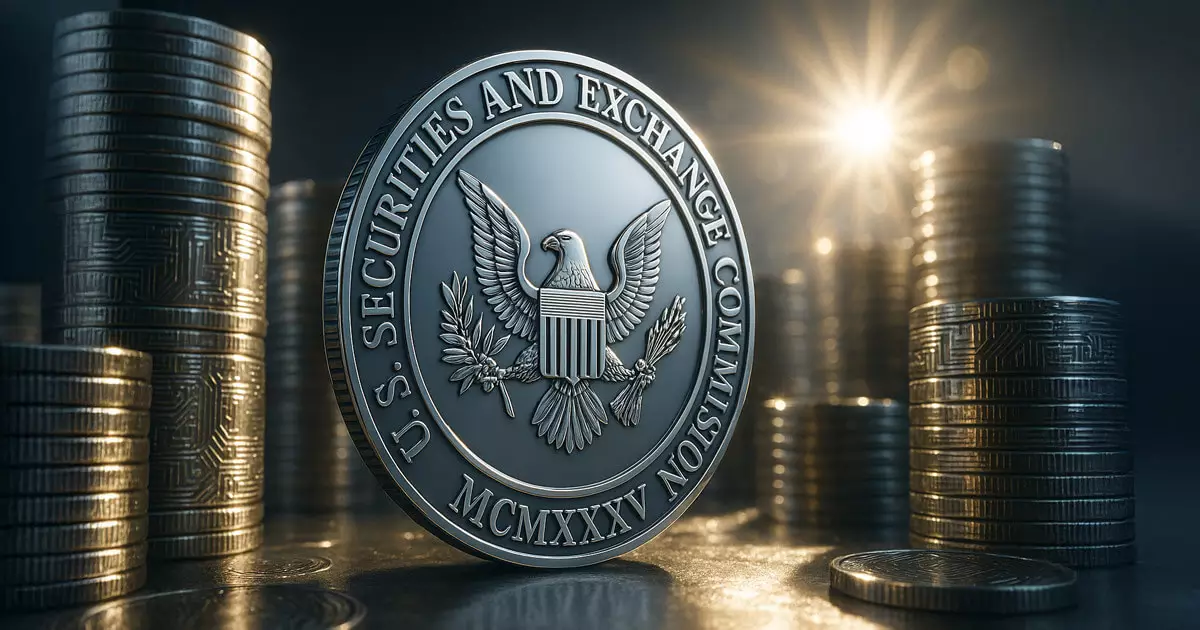In the realm of investment innovation, staking exchange-traded funds (ETFs) represent a pivotal shift. With the regulatory ambiguity surrounding cryptocurrencies finally showing signs of resolution, the potential rise of ETFs that integrate staking yields could alter the landscape of digital asset investing. Recent developments indicate that significant players like BlackRock, Fidelity, and Bitwise are primed to launch such ETFs, driven by regulatory clarity from both the Securities and Exchange Commission (SEC) and the bipartisan Digital Asset Market Clarity Act. This moment symbolizes a vital juncture where finance meets technology in an unprecedented way.
Regulatory Momentum: A Game Changer
Traditionally, the crypto space has grappled with regulatory confusion, often stifling innovation and progress. The SEC’s recent affirmation that staking does not constitute a securities sale marks a crucial turning point. Under these conditions, investors can maintain ownership of their staked assets while earning rewards, thus minimizing risk and providing a secure framework for participation. The implications of this are staggering; with the legal landscape becoming more favorable, issuers can confidently develop products that merge staking rewards with traditional ETF structures.
Adding to this positive momentum is the CLARITY Act, which directs oversight of secondary market trading to the Commodity Futures Trading Commission (CFTC), keeping the SEC’s regulations firmly in place during fundraising scenarios. This dual governance model not only empowers staking but also establishes a more dynamic regulatory environment, favoring innovation and growth.
Competitive Advantages of Staking Rewards
The financial implications of staking ETFs are substantial. Stakeholders can earn consistent yields from prominent assets such as Ethereum (ETH), Solana (SOL), and BNB. At a time when traditional equity markets demonstrate an equity risk premium below 2.5%, staking rewards pose an attractive alternative for risk-averse investors seeking reliable returns. The expected return of 2.5% to 8% on staked currencies could outperform conventional stocks, especially if equity markets stagnate or decline.
This presents a compelling argument for why investors should consider staking ETFs over traditional equities. By bypassing reliance on corporate earnings, these ETFs can offer profits that are not only more consistent but also insulated from market volatility.
The Impact of Global Economics
The backdrop of global economic conditions, particularly the ongoing trade discussions between the United States and China, adds another layer of complexity to this narrative. The potential for regulatory advancements could lead to enhanced market performance, pushing Bitcoin (BTC) and other staked tokens towards new heights. While a bearish outlook suggests a scenario where tariffs may strain equity markets, the structural advantages of staking ETFs remain intact, potentially allowing them to thrive regardless of external pressures.
If discussions result in a cooperative approach rather than confrontation, we may see a resurgence of confidence in cryptocurrencies as alternative investments. The optimism bolstered by regulatory clarity combined with external economic stimuli could energize the demand for staking ETFs, making them a preferred choice.
Investor Sentiment and Market Readiness
Despite the overwhelming optimism surrounding staking ETFs, real questions arise about investor readiness. The crypto landscape has seen its fair share of hype cycles, which often lead to disillusionment among naïve investors. However, this time, the structural integrations into secure, regulated vehicles suggest a matured market. Investors are increasingly aware of the nuances in blockchain technology and the benefits of staking yields.
As institutional players begin to take action, sentiment shifts towards a more stable and sophisticated market atmosphere. The allure of staking ETFs will likely attract not just retail investors, but also institutions looking to diversify their portfolios with digital assets and reliable returns.
The Path Forward
Looking ahead, the crypto industry stands on the threshold of unprecedented growth, as these staking ETFs could become a cornerstone for mainstream investment strategies. The combination of favorable regulations, lucrative yield opportunities, and a robust investor base could create a thriving ecosystem for staking ETFs.
With the right approach, these investment vehicles could reshape not just how we engage with digital assets, but also how traditional investments are viewed in a rapidly evolving financial landscape. As skepticism gives way to exploration, the time is ripe for investors to reassess their strategies and consider the powerful intersection of technology and finance that staking ETFs represent.














